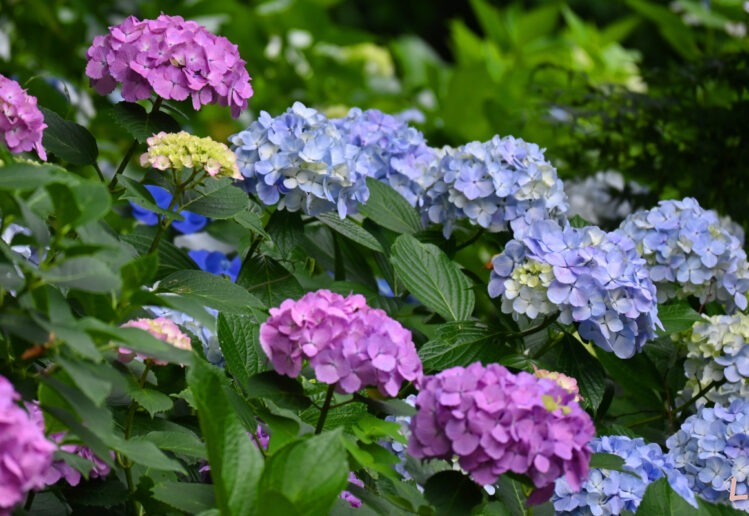Besides the famous cherry blossoms, I discovered my love for hydrangea in Japan, which are called Ajisai (紫陽花 / アジサイ) in Japanese. In the past few years I have visited a few places where you can see hydrangeas. I would like to share them with you here. Since I try to see new places every year, I plan to continue updating this article in the future so that you can find a good list of travel ideas here.
When is Hydrangea Season in Japan?
Hydrangeas in Japan usually bloom during the rainy season, and that’s a good thing because they need plenty of water otherwise they dry out and the blooms don’t last long. The first hydrangeas can be seen as early as the end of May, but they usually start blooming in June. This is because there are many different types of hydrangeas in Japan and some of them have different flowering times. They usually bloom for 2 to 4 weeks, so if the weather is right and depending on the region, you can find hydrangeas until July. But the best month for seeing Ajisai is June.
Hydrangea Spots in Japan
Of course, there are countless places in Japan where you can see hydrangeas – and unfortunately I will probably never be able to visit them all myself. Since I live in the west of Tokyo, I mostly travel in this region, which is why I have already visited several places there. Many of them are well known, but some may still be some hidden spots. Enjoy taking a look through my list.
Tokyo Prefecture
Takahata Fudoson Temple
The Takahata Fudoson Temple (高幡不動尊) in western Tokyo is one of my favorite hydrangea spots in Tokyo. It is just a few minutes’ walk from Takahatafudo Station in Hino City. It is easy to reach from Shinjuku on the Keio Line. Around the temple grounds there are about 7,500 hydrangeas of 200 varieties. The five-story pagoda in particular is a great photo opportunity with the hydrangeas. Every year from the beginning of June to the beginning of July there is also a hydrangea festival, where you also can find some food stalls. A shop in front of the entrance sells Ajisai soft cream. And you can also see Ajisai on the goshuincho, the temple’s pilgrimage book.
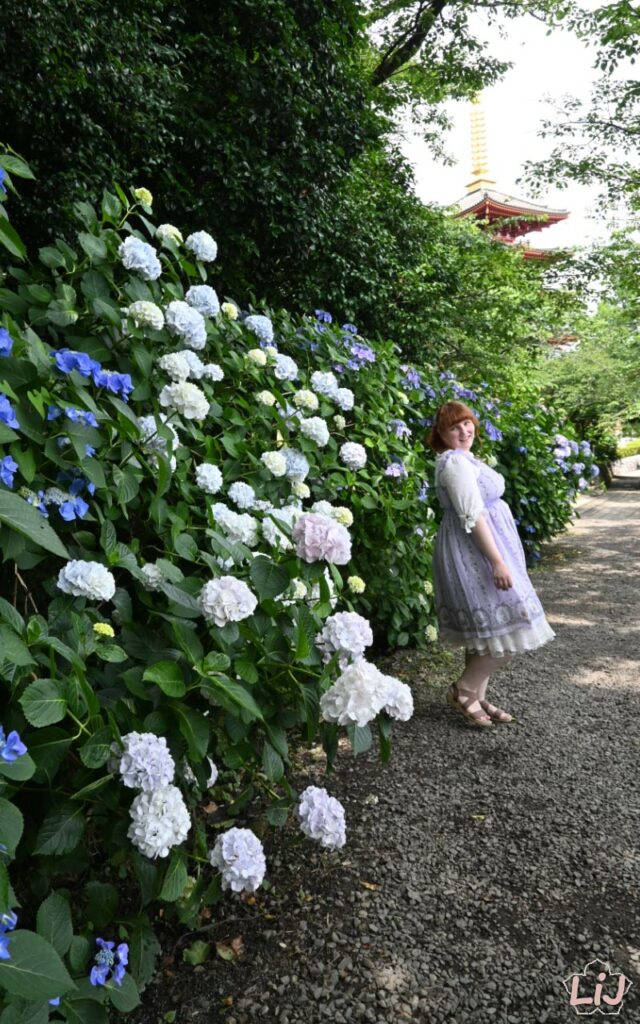
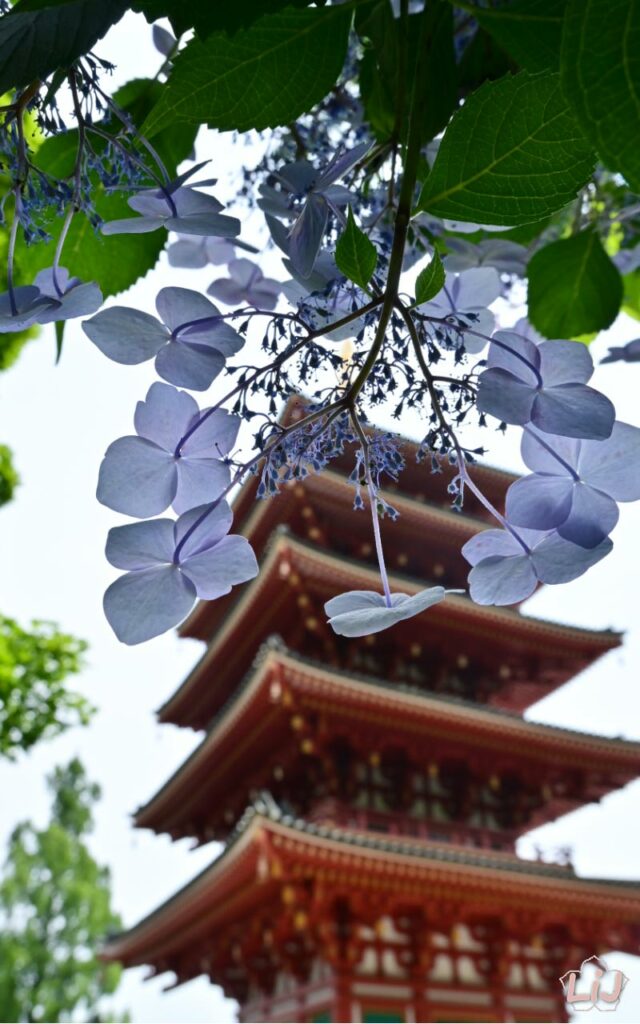
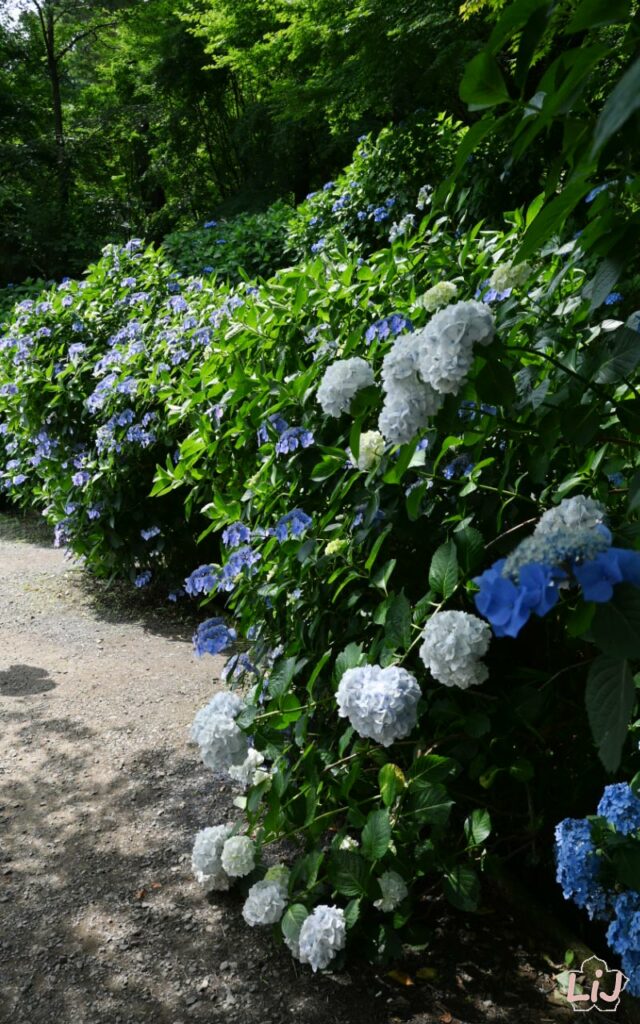
Visited: June 2019 + June 2022
Address: 〒191-0031 東京都日野市高幡699 // 191-0031 Tokyo, Hino City, Takahata 699
Link: Official Website
Hakusan Shrine
Hakusan Shrine (白山神社) is located in the Bunkyo ward, in downtown Tokyo, just about a three-minute walk from Hakusan Station (Mita Line). The Shinto shrine was founded in 948 and moved to its current location in 1655. In June, about 3,000 hydrangea bloom around the shrine and Hakusan Park. The shrine is also a main part of the Bunkyo Ajisai Matsuri (文京あじさいまつり), which takes place during the flowering season.
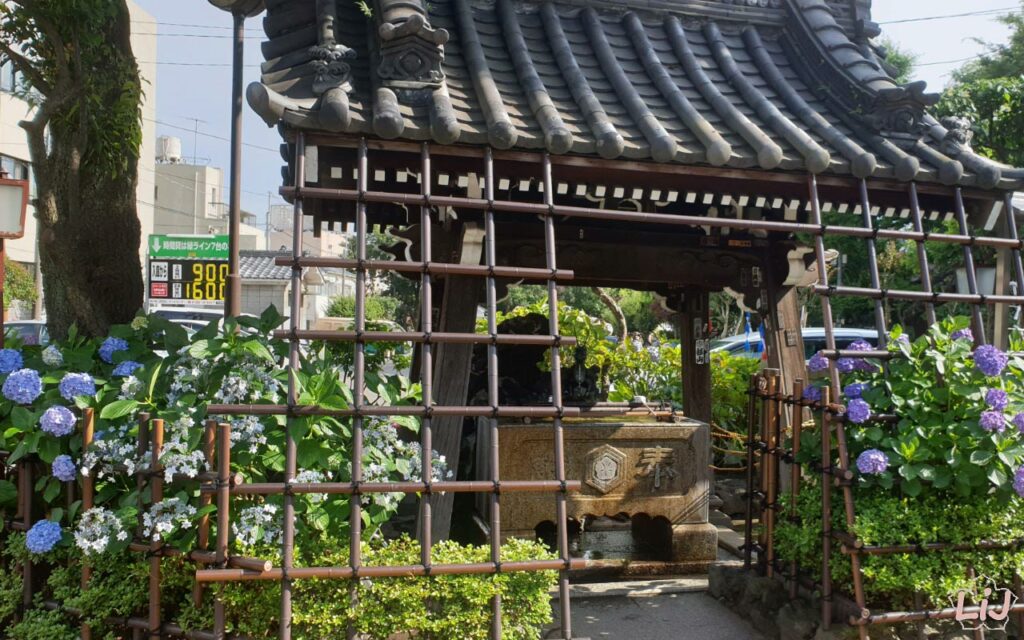
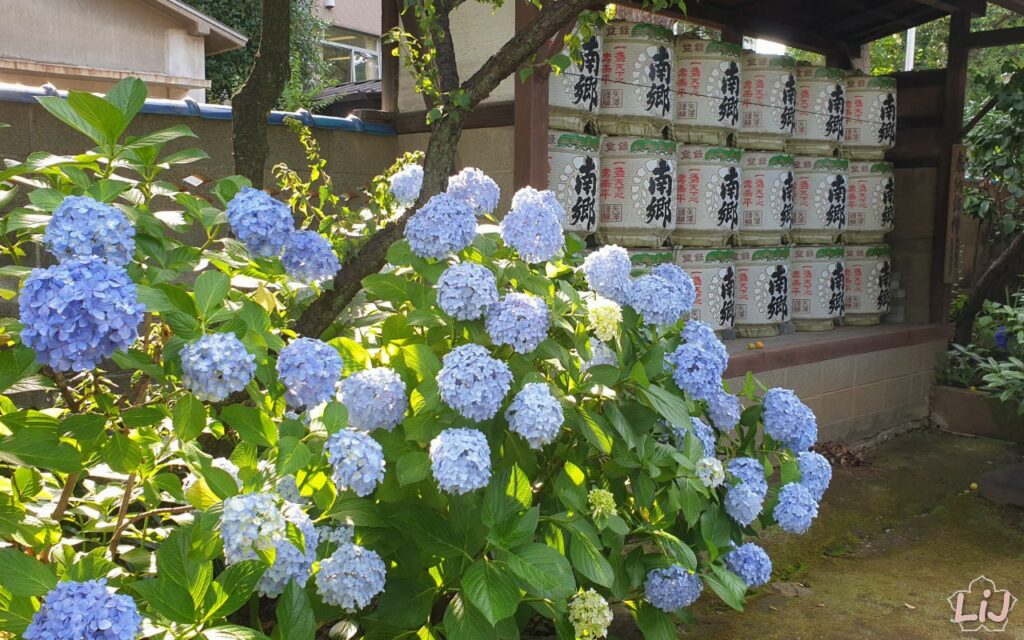
Visited: June 2020
Address: 〒112-0001 東京都文京区白山5-31-26 // 112-0001 Tokyo, Bunkyo Ward, Hakusan 5-31-26
Link: –
Tamagawadai Park
After the shrines and temples in Tokyo, we now come to a small but beautiful park. Tamagawadai Park (多摩川台公園) is just a few minutes away from Tamagawa Station, where the Meguro Line and Toyoko Line stop. There you will find around 3,000 hydrangea plants located on the hill. There are paths leading through them and there are also a few places to sit to rest and enjoy the view. And once you’re there: don’t forget to visit the Tamagawa Sengen Shrine (多摩川浅間神社)! This usually has monthly changing goshuin and from the observation deck you can not only watch the trains passing by, but if the weather is good you can also see Mount Fuji in the distance!
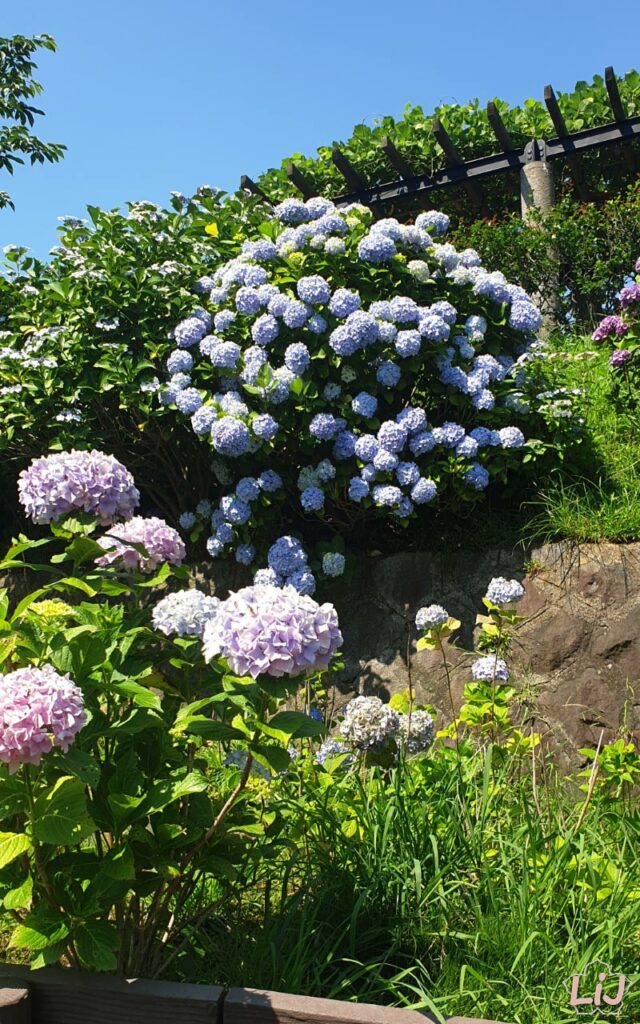
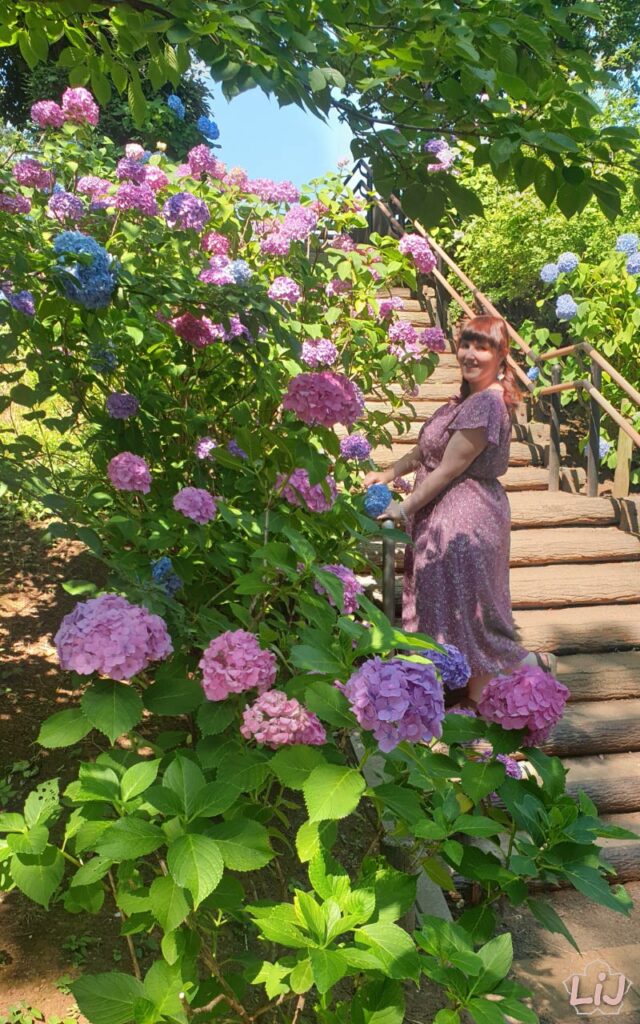
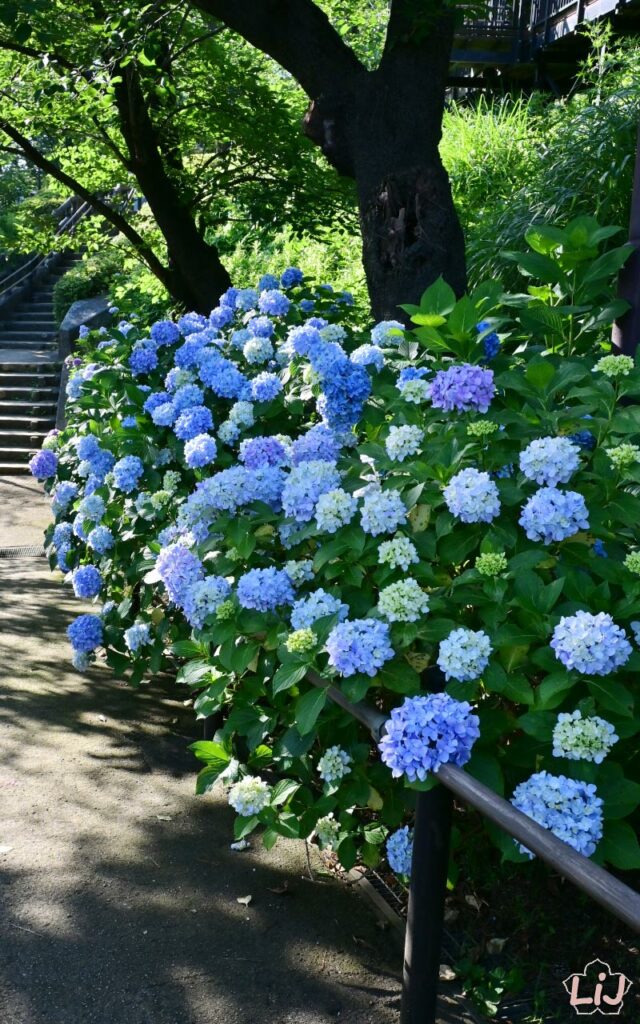
Visited: June 2021 + June 2023
Address: 〒145-0071 東京都大田区園調布一丁目63番1号 // 145-0071 Tokyo, Ota Ward, Denenchofu 1-63-1
Link: Official Website of Ota
Hourinji Temple
Not an Ajisai spot per se, although there are a few hydrangeas blooming on the temple grounds, but it is worth visiting here, especially for the beautiful decoration. The chozuya, water basin, of the Hourinji (法輪寺) is always decorated with seasonal flowers and other elements and there are many bowls with flowers scattered around the grounds. In addition, Hourinji always has beautiful goshuin. You can find current pictures of it on Instagram.
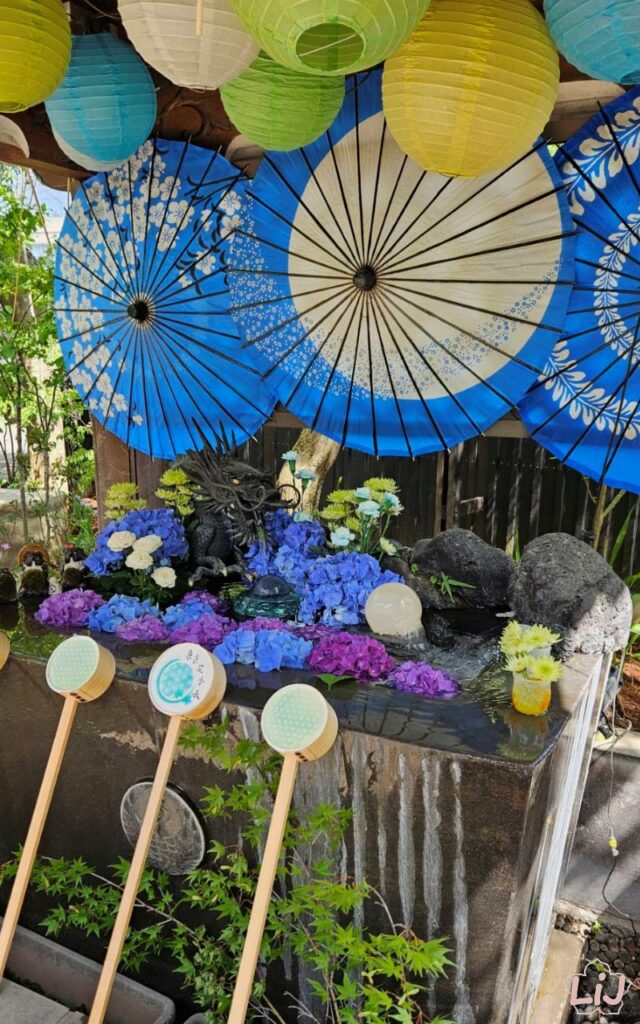
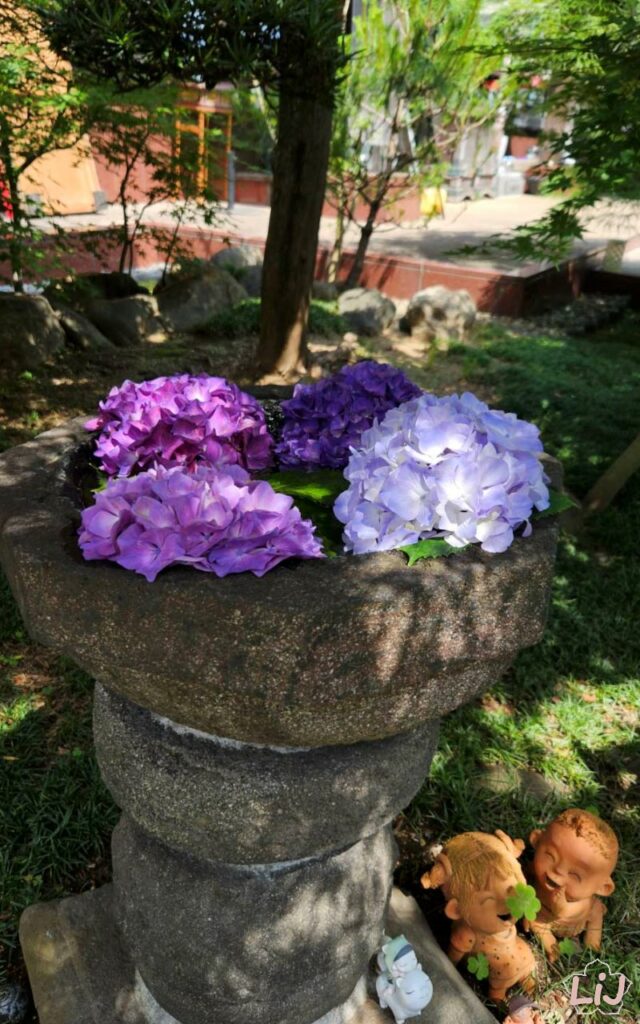
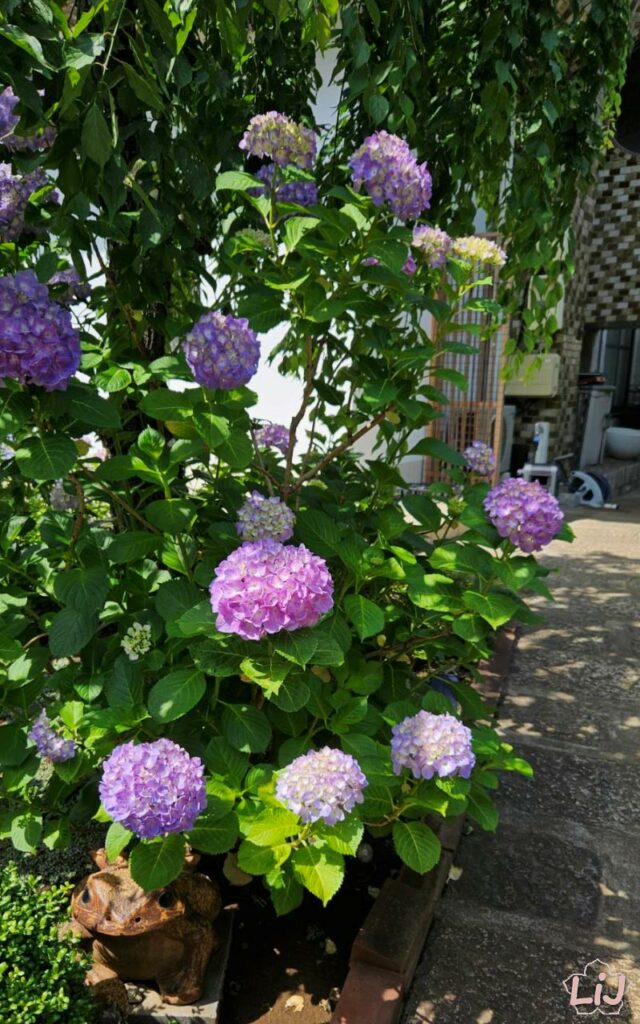
Visited: May 2023
Address: 〒169-0051 東京都新宿区西早稲田1−1−15 // 169-0051 Tokyo, Shinjuku Ward, Nishiwaseda 1-1-15
Link: Official Website
Myokakuji Temple
Myokakuji (妙覚寺) is a rather unknown temple in Inagi City in the west of Tokyo Prefecture. It is only a few minutes’ walk from Keio-Yomiuriland station and is therefore easy to reach from Shinjuku. The temple is said to have been built at the end of the Muromachi period (around 1336-1573) and is surrounded by greenery. The steps leading up to the temple are particularly surrounded by hydrangeas. But there are also some bushes on the grounds themselves.
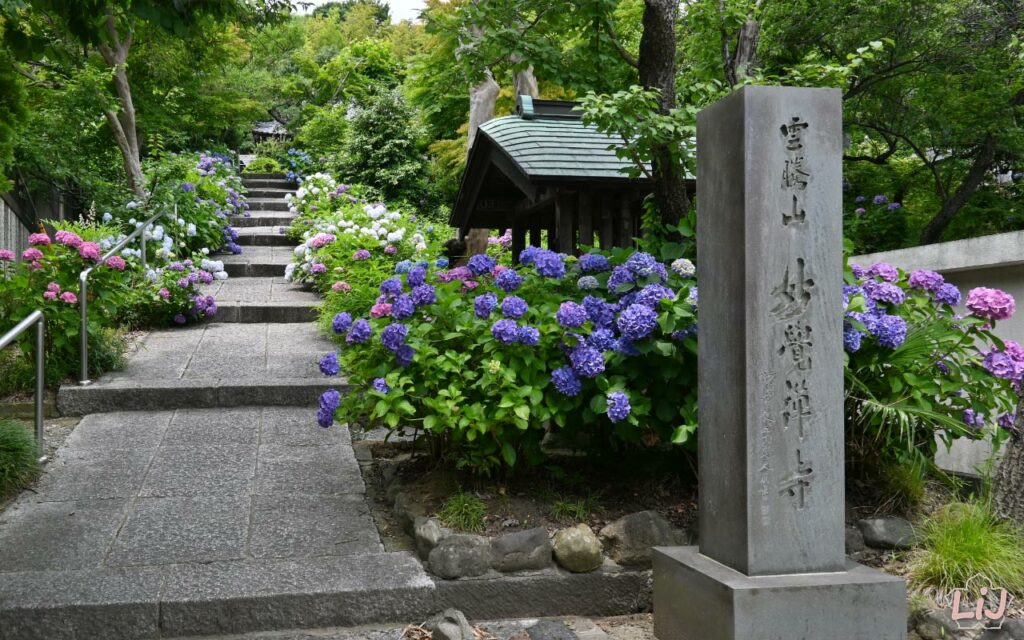
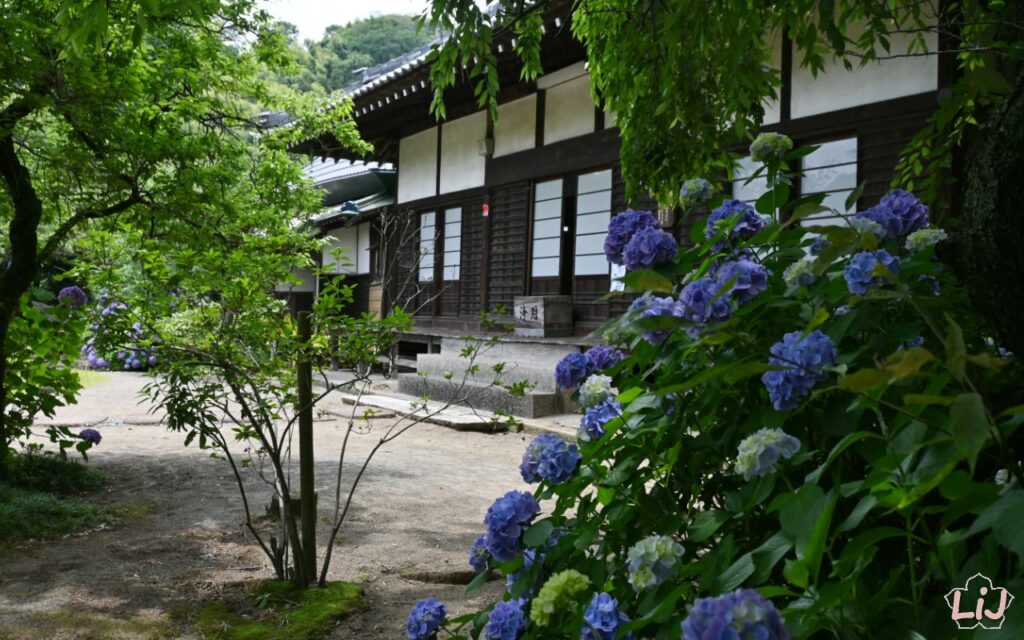
Visited: June 2022
Address: 〒206-0812 東京都稲城市矢野口2454 // 206-0812 Tokyo, Inagi City, Yanokuchi 2454
Link: Inagi City Tourism Bureau
Yakushiike Park
The Yakushiike Koen (町田薬師池公園) in Machida is not known for its hydrangeas, but you can still find about 1,000 hydrangeas of 42 different species in the park in western Tokyo. In addition to the hydrangeas, about 2,200 irises are also in bloom in the park at that time. Furthermore, nearby is the Ebine-en (町田えびね苑会場) with 5,000 hydrangeas, but this place is only open during a certain time frame. If you take the long bus ride from Machida Station, you can also visit the Machida Squirle Park (町田リス園) with its squirrels, which is right next to the park.
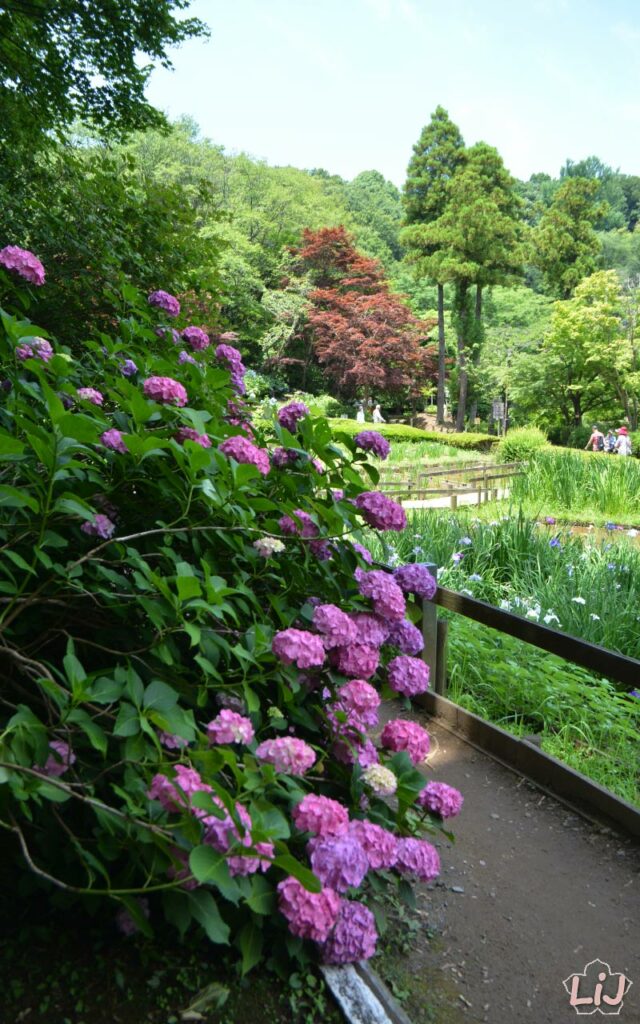
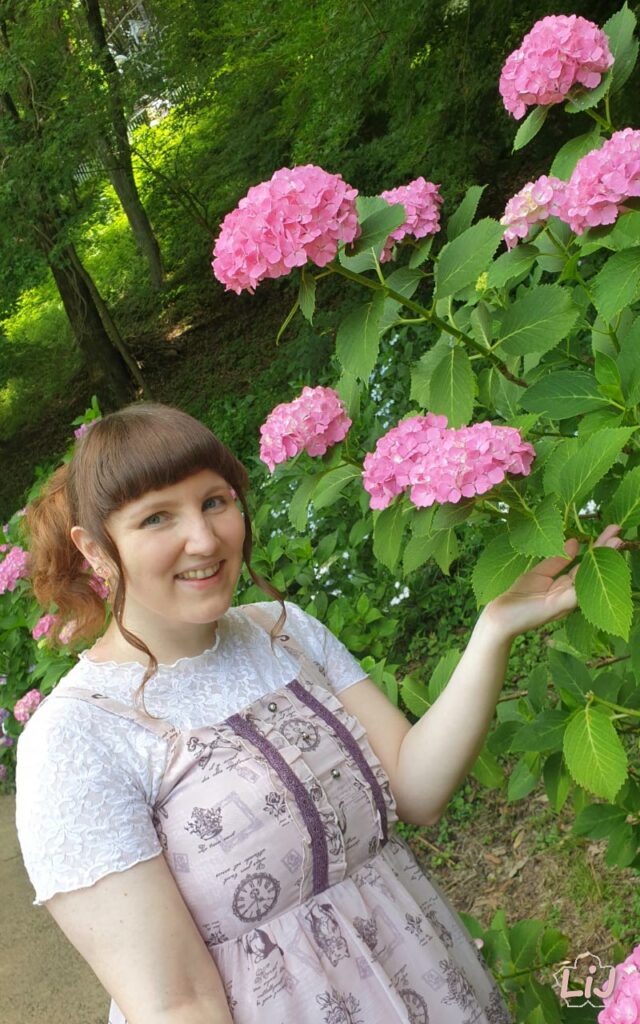
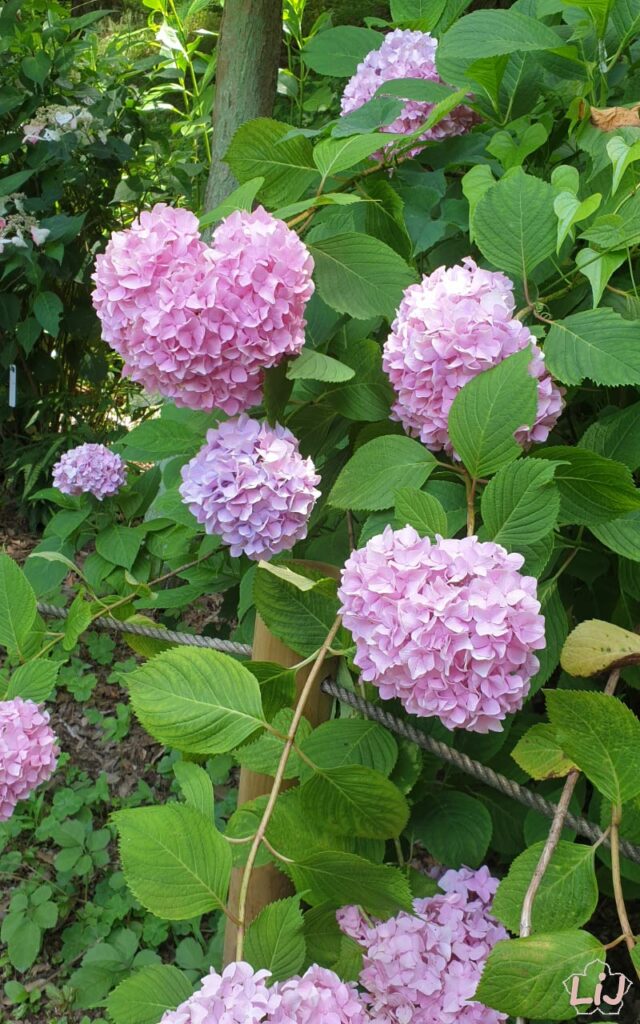
Visited: June 2020
Address: 〒195-0063 東京都町田市野津田町3270番地 // 195-0063 Tokyo, Machida City, Nozutamachi 3270
Link: Official Website
Kanagawa Prefecture
Kaisei Town
For me, the highlight of the Ajisai spots that I have visited in Japan so far is the Kaisei-machi Ajisai Matsuri (開成町あじさいまつり) in the town of the same name, Kaisei, in Kanagawa Prefecture. Getting there by public transport is a bit more complicated, which is probably why it is not so crowded. Luckily, we went there by car. Around 5,000 hydrangeas bloom in the rural area, surrounded by rice fields – a very unique scenario. There is also a small park with hydrangeas and many other beautiful spots. The festival takes place around mid-June, during which performances are also shown and sometimes food is offered.

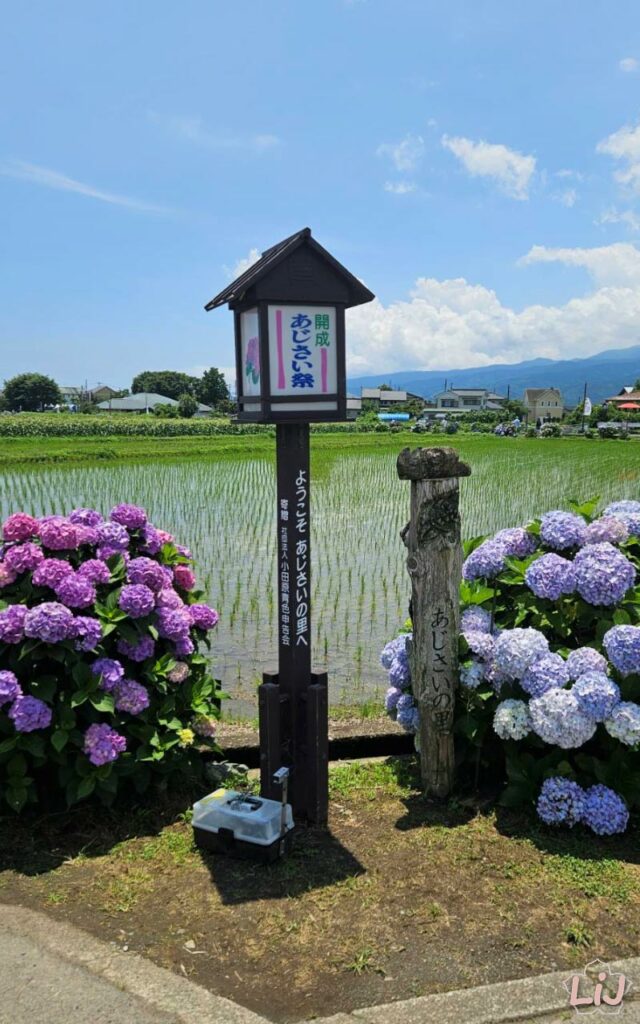
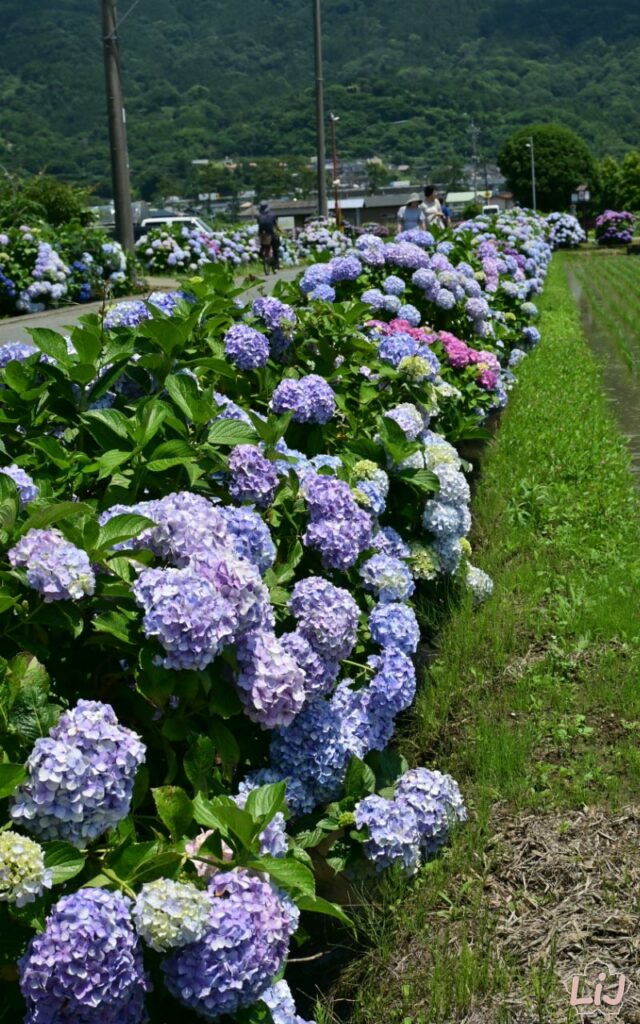
Visited: June 2023
Address: 〒258-8502 神奈川県足柄上郡開成町 // 258-0021 Kanagawa, Ashigarakami District, Kaisei Town
Link: Kaisei Ajisai
Myorakuji Temple
Myoraku-ji (妙楽寺) belongs to Kawasaki City and is somewhat remote, best reached by bus. The locals also call the temple “Ajisai Temple” because around 1,000 hydrangeas with 28 varieties bloom on the slopes of the temple. The temple is said to have been built there in the 16th century. The hydrangeas were planted by a former monk and now attract visitors every year.

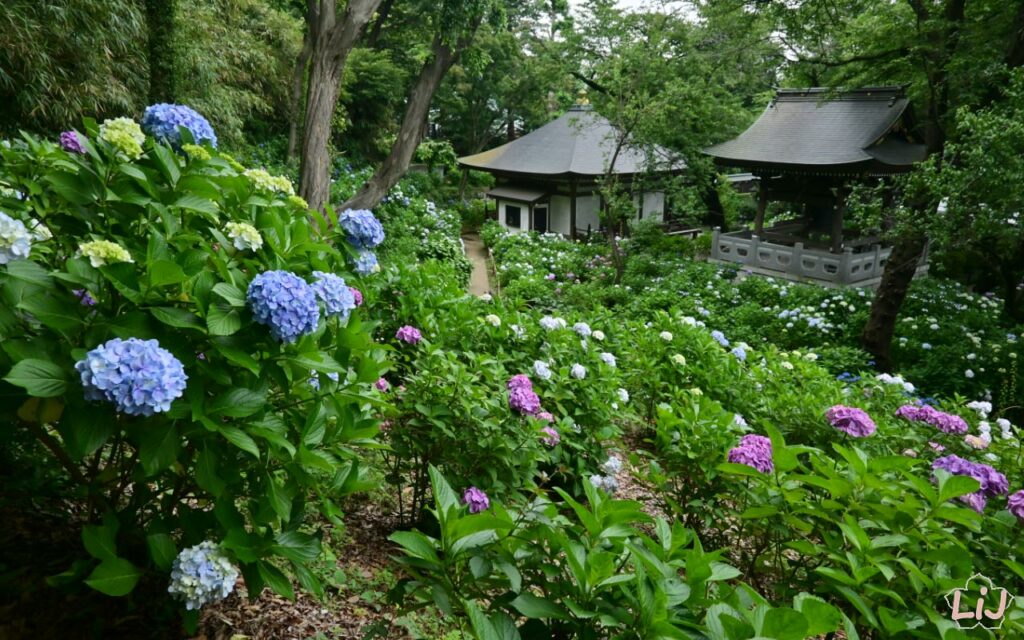
Visited: June 2023
Address: 〒214-0023 神奈川県川崎市多摩区長尾3-9-3 // 214-0023 Kanagawa, Kawasaki City, Tama Ward, Nagao 3−9−3 Myorakuji
Link: Kawasaki City
Yokohama English Garden
The Yokohama English Garden (横浜イングリッシュガーデン) is a popular place for flower lovers – and I really like it too, because every season has something different to offer. The garden is mainly known for its roses, but in June the focus is on hydrangeas. There is great decoration – when we visited, floating umbrellas and picture frames – and you can relax and walk along the many paths through the garden and take photos. There is a free shuttle bus from Yokohama Station, but you can also walk there from Hiranumabashi Station (about 10-15 minutes).
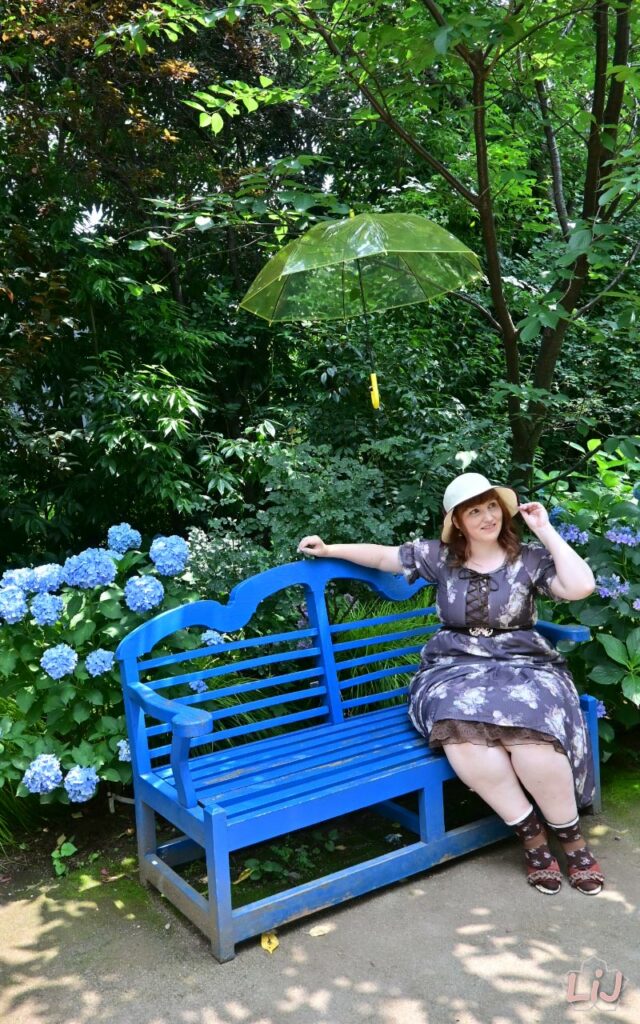
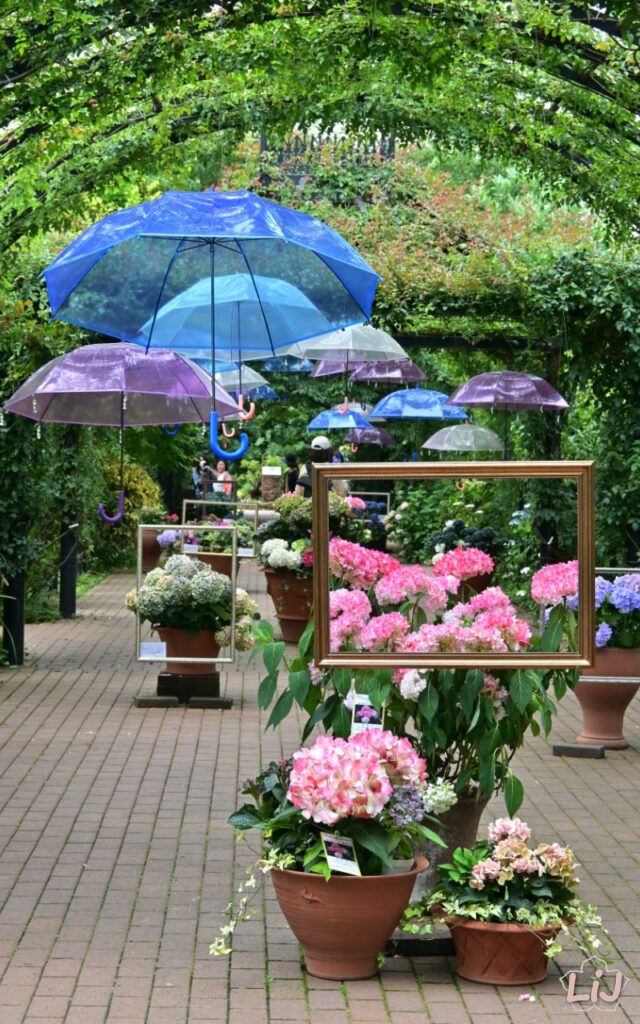
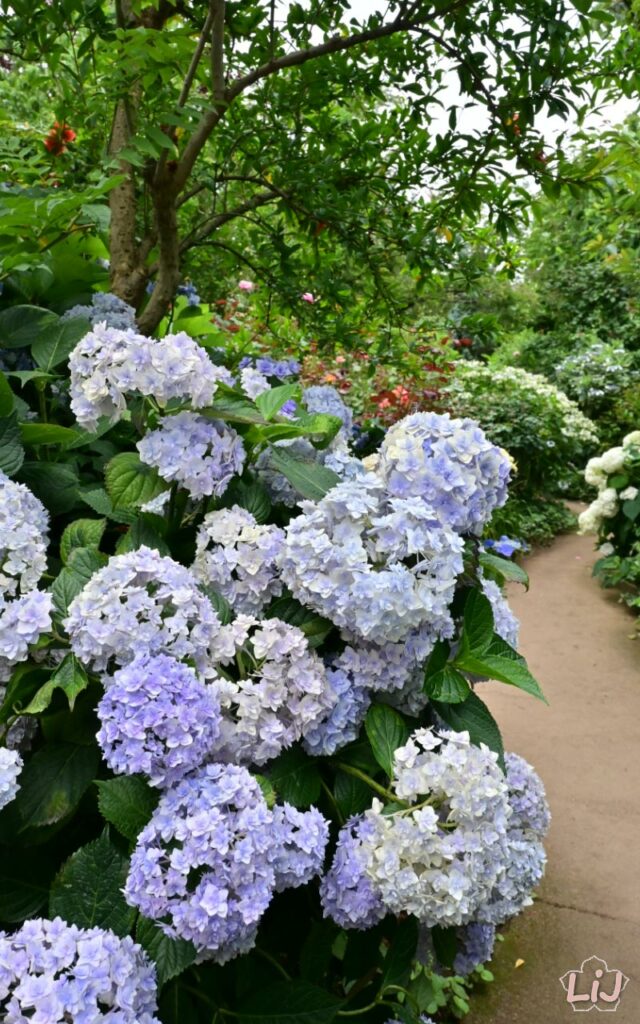
Visited: June 2023
Address: 〒220-0024 神奈川県横浜市西区西平沼町6-1 tvk ecom park内 // 220-0024 Kanagawa, Yokohama City, Nishi Ward, Nishihiranumacho, 6−1 tvk ecom park
Link: Official Website
Sagamihara Kita Park
The Sagamihara Kita Park (模原北公園) is located in the city of the same name, Sagamihara, and is a fairly large public park. It is particularly known for its hydrangeas, which bloom from June to July. There are around 10,000 plants and 200 species that bloom in many beautiful colors. The white-green Annabelle hydrangeas in particular are found in a large field. The easiest way to get to Sagamihara Kita Park is by bus from Hashimoto Station. Luckily for me, it is ‘only’ a long bike ride away, which is why I have visited it several times. There are also roses and higanbana (spider lilies) here at other times.


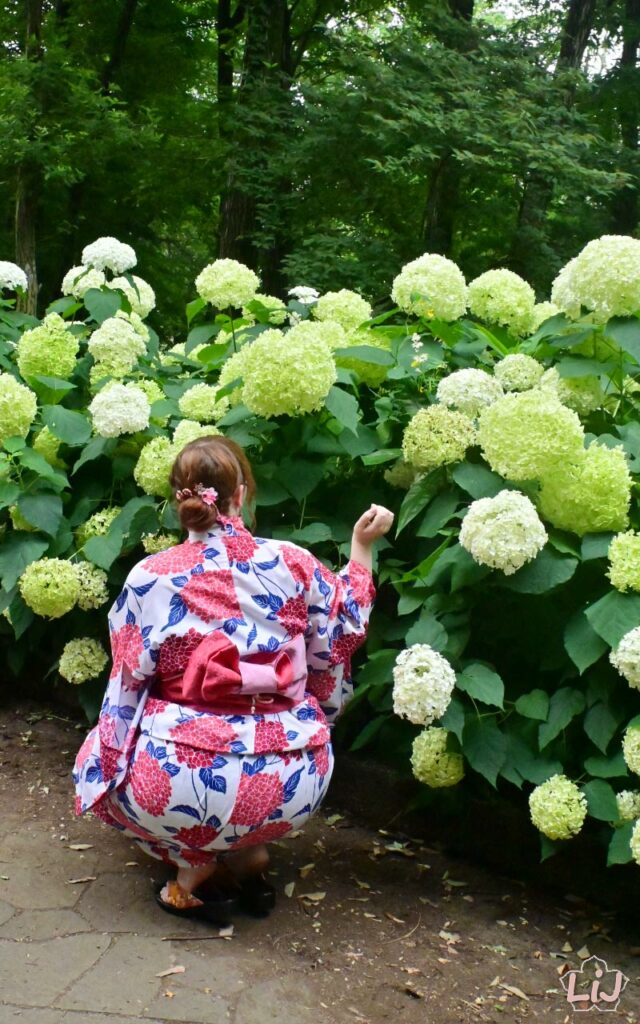
Visited: June 2021 + July 2022
Address: 〒252-0134 神奈川県相模原市緑区下九沢2368-1 // 252-0134 Kanagawa, Sagamihara City, Midori Ward, Shimokuzawa 2368-1
Link: Sagamihara SRG // Kanagawa Prefectural Government
Sagamihara Park
Sagamihara Park, officially called Sagamihara Asamizo City Park (市立相模原麻溝公園), is also located in Sagamihara, but in a different corner than Sagamihara Kita Park. Around 6,000 hydrangeas of various varieties bloom there in June. At about the same time, there are also around 26,000 Japanese irises, which are almost more spectacular to look at. Two floral splendors that are perfect for combining.
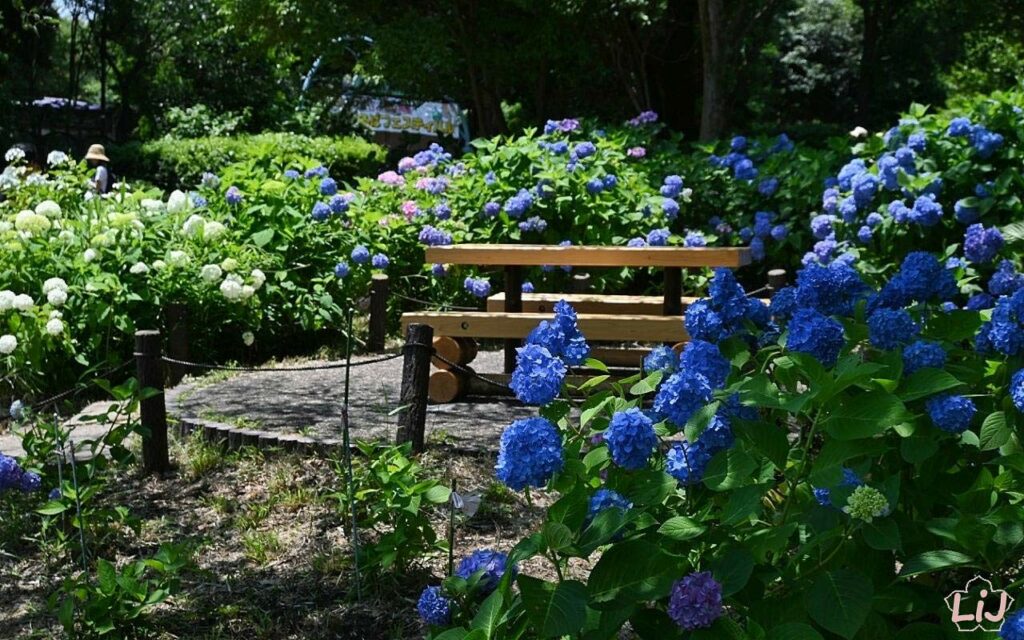
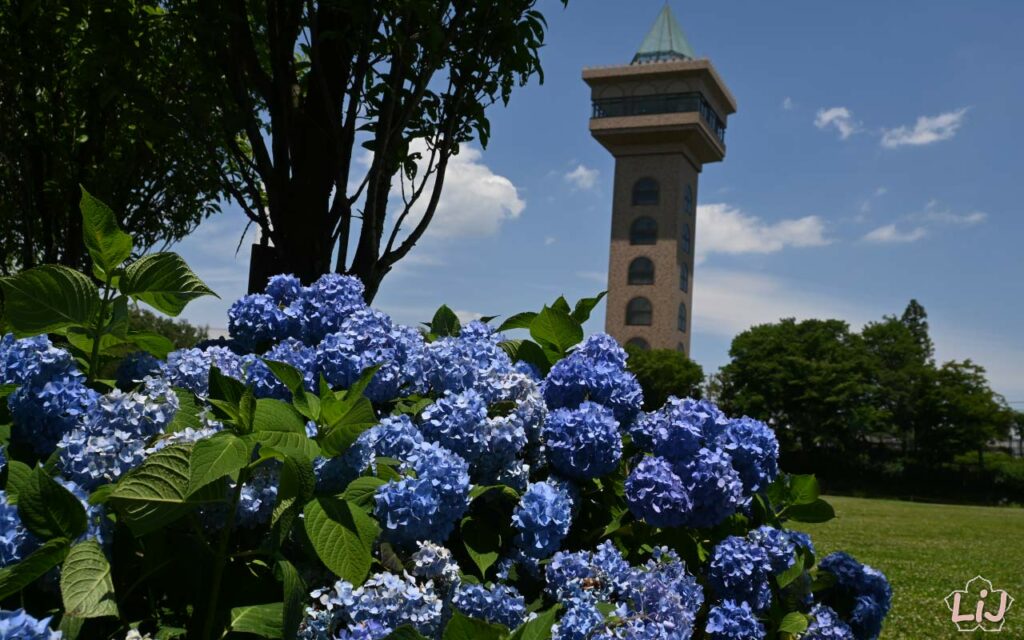
Visited: June 2022
Address: 〒252-0328 神奈川県相模原市南区麻溝台2317-1 // 252-0328 Kanagawa, Sagamihara City, Minami Ward, Asamizodai 2317-1
Link: Kanagawa Parks
Kamakura’s Temples
Kamakura (鎌倉) is known for its temples with hydrangeas. I made a two-day trip to Kamakura in 2017 with an overnight stay and visited a few of these places. Unfortunately, I hardly have any photos of them anymore… I took most of them with my camera and this folder on the external hard drive just gives me an error message. So here is just one of the few cell phone photos. In Kamakura, the Meigetsuin and the Hasedera are particularly popular at this time. The Meigetsuin Temple (明月院) is even called the “Ajisai Temple” because around 2,500 hydrangeas bloom on the grounds. Hasedera (長谷寺) also has around 25 different types of hydrangeas blooming on its slopes. A wonderful sea of flowers.

Visited: July 2017
Address: Kamakura area
Link: Trip Kamakura // Hasedera Tempel
Hakone Area
The area around the onsen town of Hakone (箱根) is very famous for its hydrangeas. Unfortunately, our visit in July was a little too late for the flowers to bloom and we were only able to enjoy a few of the flowers. Someday I would like to go back to Hakone during the peak flowering season, because you can find hydrangeas in many places. The most famous thing here is the ride on the Hakone Tozen, which drives right through the flowers on the mountain. Gora Park is also said to be very beautiful during the Ajisai season.
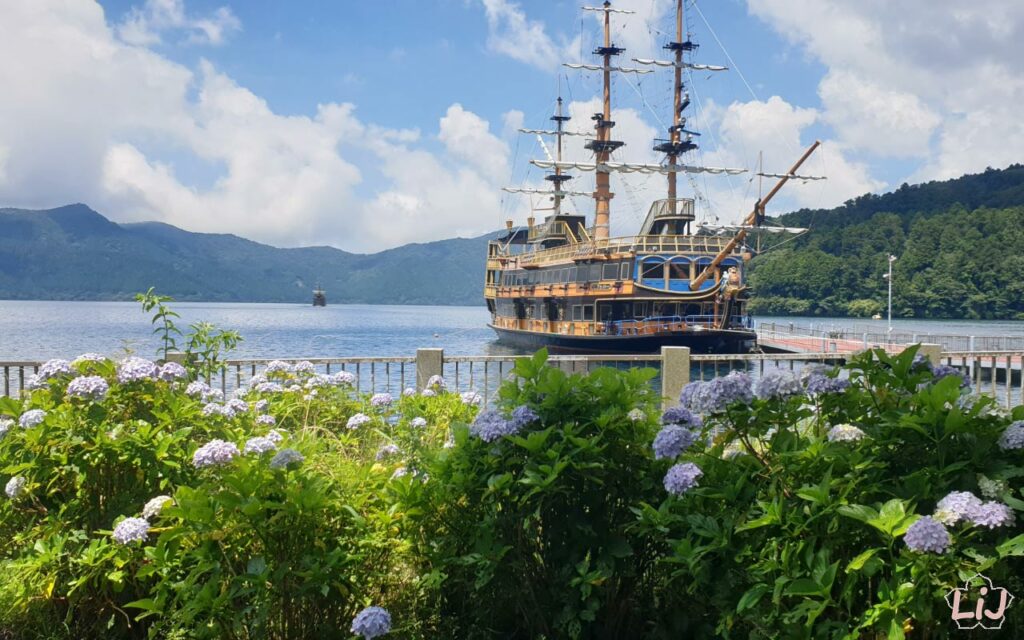
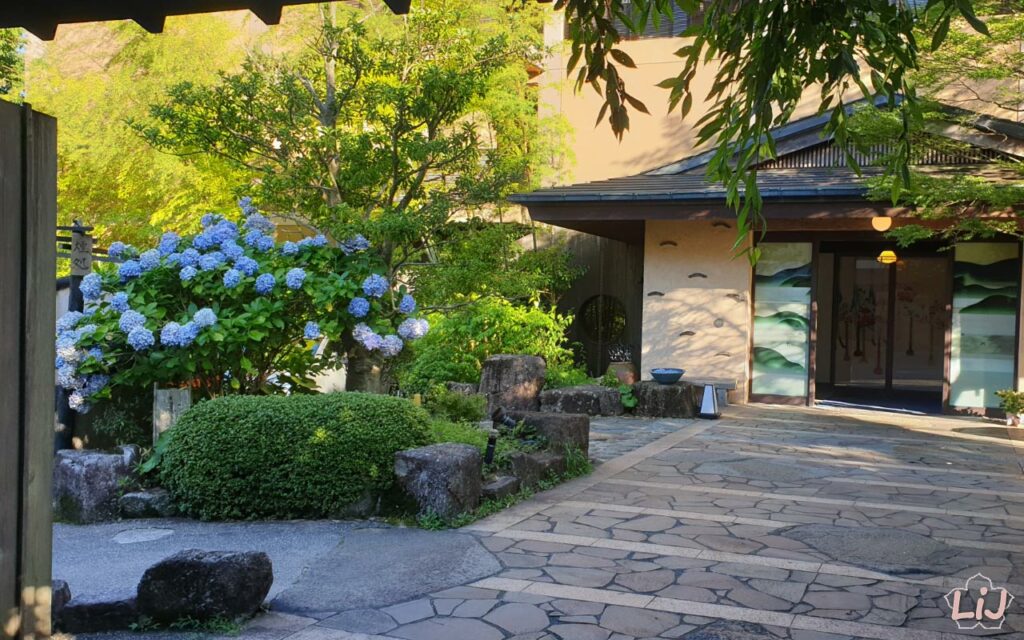
Visited: July 2021
Address: Hakone area
Link: Hakone Navi
You don’t have enough of ajisai yet? Take a look on my Instagram account and check the hashtag #lij_ajisai where you can find my posts about hydrangea ♡
